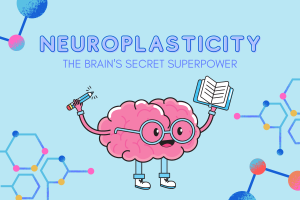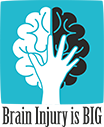empowering the severely brain injured and their families via support, understanding and a network of care
Rehabiliation and Care following a brain injury
Rehabilitation and care following a brain injury is unpredictable. Every brain injury is different, what is successful for one may not be for another.

Unlike most other cells in the body, damaged brain cells cannot be restored. However, the brain has a natural ability to rewire itself through neuroplasticity, rewiring the brain. Neuroplasticity relates to our ability to learn. With every repetition of a thought or an emotion we reinforce a neural pathway.
In the first months following a severe brain injury it is only possible to guess at the length of time that recovery will take and the likely outcome. The only thing that is certain is that recovery is a very slow process and will take months or years rather than weeks.
Sometimes it has been said that there is a limited period of time for recovery following brain injury. That recovery ceases to take place beyond two years. This is now known not to be the case and people may actually continue to improve for many years following brain injury.
Hospital to Rehabilitation Unit
Rehabilitation aims to help the brain learn alternative ways of working. It also helps the patient and the family cope successfully with any remaining disabilities.
Choosing which rehabilitation unit to send someone to, should involve the clinical team, the family and whoever is likely to have to fund the rehabilitation. This may be either the NHS, Local Authority, a Compensation Claim, Medical Insurance or Self Funding.
Once suitable rehabilitation has been chosen a referral will be made. The rehabilitation unit will then do an assessment to ensure they are able to provide the necessary care and help that the patient needs.
Hospital to Home
Before a person is discharged from hospital a formal discharge meeting takes place. This should be a multi-discipline meeting which is attended by social services, hospital/rehabilitation staff and family members. The patients GP may also attend.
Prior to being sent home the patient may be allowed home for short stays as a trial run to being sent home. This will help with the transitions from hospital to home and to check that the home environment will the suitable. For example, if a patient is in a wheelchair they may need a ramp, wider doorways etc. The hospital team will be able to give advice on care and adaptations, and how this could be funded. We have a Guide to Funding of Care and Welfare Benefits which may also assist you.
Following a brain injury people can left with a variety of psychological and physical problems and these may be helped by an intensive period of inpatient rehabilitation. On release from hospital or following a period of being at home, there may not be a place available at a rehabilitation unit, a person may be transferred to a specialise brain injury rehabilitation unit for further treatment.
When is person is transferred home, the following areas need to be assessed:
• Will his/her home environment be safe?
• Could there be any risks to others (e.g. children)?
• What remaining difficulties does the patient have? And how these can be met.
• Does the home environment cater for his/her physical needs? (particularly if a person is in a wheelchair – need to consider how the person can bath/shower, go to the toilet, get to bed, leave/enter the house etc.)
• How will his/her continuing needs for rehabilitation be met?
• What type of support will be needed at home? And how this can be provided.
On leaving hospital the patient and family members should be given contact details of the neurological rehabilitation team, so that they can contact someone if further advice is needed.



